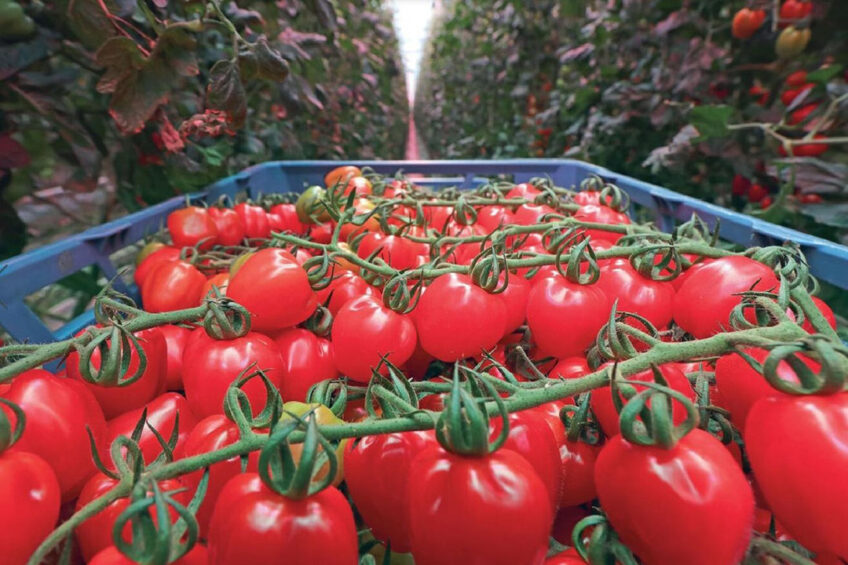Tomato peel and rosehip improve egg quality

Re-utilisation of agro-industrial waste and by-products that possess compounds with added value is important not only to decrease the volume of waste but also to develop re-utilisation strategies that add economic value, thus moving from a linear to a circular economy.
A study published in the journal Research on Animal Production showed that a dietary inclusion of 4% and 12% tomato powder in Japanese quail diet decreases the concentration of malondialdehyde, a marker of oxidative stress, while increasing the activity of the antioxidant enzyme, glutathione peroxidase, suggesting that tomato powder improves antioxidant activity in quails.
Another study in Poultry Science showed that the addition of rosehip to broiler diets decreases the by-product of lipid peroxidation, TBARS (Thiobarbituric acid reactive substances). It was against this background that the researchers involved in the study described here sought to investigate the effects of dietary supplementation with tomato peel and rosehip meal on the transfer of phytochemicals to eggs, antioxidant profile and the markers of lipid peroxidation in stored eggs. In addition, explaining the contribution of the 2 products to increased levels of vitamin A and vitamin E in eggs.
Antioxidant activities
Tomato residue is a good source of bioactive molecules, especially carotenoids such as β-carotene and lycopene. The seeds of rosehip fruit represent approximately 29% of rosehip weight, however, they are usually discarded as waste after the processing of rosehip.
The seeds contain up to 8% oil which is valuable due to its concentration of bioactive lipids, including tocols and sterols. These 2 phytochemical-rich products have beneficial bioactivities, specifically antioxidant activities.
The study tomato peel and rosehip in laying hens
A group of 42-week-old laying hens was used in this study to gain insight into the effects of dietary supplementation with tomato peel and rosehip meal on the transfer of phytochemicals to eggs, antioxidant profile and the markers of lipid peroxidation in stored eggs.
The birds were assigned to 3 dietary treatments with 30 birds in each trial, as follows:
- A control group (a corn-soybean diet with no by-product addition)
- A tomato peel group (control + 2% tomato peel)
- A rosehip meal group (control + 2% rosehip meal)
Antioxidant profile
The researchers found that supplementation of both the tomato peel and rosehip meal increased the lutein and zeaxanthin (main carotenoids in egg yolk) carotenoid content and antioxidant capacity in eggs compared to the control group.
Vitamin E content in eggs was increased by the tomato peel, while vitamin A was increased by rosehip, compared to the control.
The polyphenols were higher overall in the eggs of birds fed the tomato peel diet, while the rosehip meal diet had lower total polyphenols. The higher vitamin E content of the eggs was attributed to the higher levels of vitamin E (149 mg/kg DM) found in the tomato peel compared to a lower vitamin E content (19 mg/kg DM) in the rosehip meal. What was of interest to the researchers is that in a previous study, the vitamin E content in the whole tomato fruit was between 0.17 and 0.62mg/100g fresh weight, which is below the values obtained in this study (2.14mg/100g fresh weight).
An increase in egg weight
Conversely, the average daily feed intake, feed conversion ratio and laying percentage were not significantly affected by the dietary treatments; however, the inclusion of dietary tomato peel led to a significant increase in egg weight compared to both the rosehip meal and the control diet.
According to the researchers, studies with tomato meal show that greater egg weights can be attributed to the tomato’s high lysine content. They suggested that the lysine content may have a similar effect, although the lysine content of the peel was not measured.
Lipid peroxidation in eggs
The oxidative stability of eggs during storage is essential in egg production. In this study, lipid oxidation was assessed by measuring primary oxidation products (peroxidation value, conjugated dienes and conjugated trienes) that are formed in the early stages of lipid oxidation and by measuring secondary oxidation products (p-anisidine value and TBARS). These values were assessed after 2 storage periods (28 days and 40 days). The peroxidation value in eggs stored for 28 days was lowest for the rosehip diet followed by the tomato peel, with the control showing the highest peroxidation.
The secondary oxidation products (TBARS levels and the p-anisidine values) increased significantly after a longer egg storage time regardless of dietary treatments. However, after supplementation with either tomato peel or rosehip, the increase was less pronounced compared to the control. After 40 days storage the most distinct reduction in the rate at which secondary oxidation products were formed (by more than 30%) was observed with the rosehip meal, while the reduction for the tomato peel ranged from 15-25%, compared to the control. The antioxidant capacity of the 2 products was part of the observed lower lipid peroxidation of eggs stored for a longer period.
Potential natural antioxidants to improve egg quality
It was concluded that the supplementation of tomato peel to laying hens improves egg weight and vitamin E content. Although not verified by the current study, the improvement in egg weight was attributed to the possible high lysine content as found in whole tomato fruit.
Omega-3 from algae for nutritious eggs
Fish oil is a traditional source of omega-3, but due to limited global annual production, there is a deficit. A new source needs to bridge this gap. Read more…
In addition, the capacity of the 2 products to transfer phytochemicals to the egg contributed to the observed high antioxidant capacity in eggs. It was noted that with longer periods of storage, lipid peroxidation as measured by secondary oxidation products (TBARS and p-anisidine) increases, irrespective of the type of diet. However, this increase is less pronounced with the rosehip diet compared to tomato peel.
The researchers consider both tomato peel and rosehip seeds to be potential natural antioxidants that will improve egg quality without compromising production performance.













